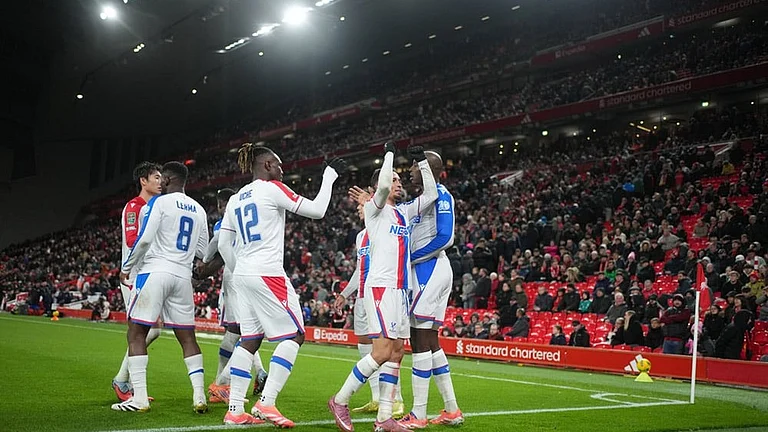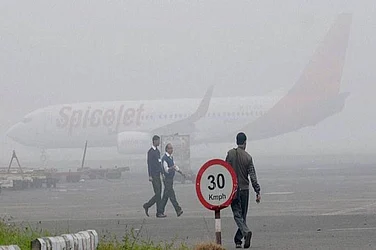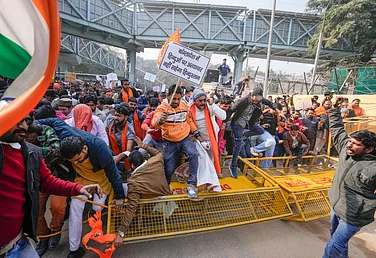The Bharatiya Janata Party (BJP) has had to tailor its strategy to make inroads into the Northeast. Its usual political agendas—cow protection, construction of Ram Mandir, providing citizenship to Hindu refugees from neighbouring countries—that have earned it rich electoral dividends in other parts of India are unlikely to gain wide currency in the region.
Political observers claim that the BJP has customised plans that take into account local culture, ethnicity, religions and languages of the eight states—Arunachal Pradesh, Assam, Manipur, Meghalaya, Mizoram, Nagaland, Tripura and Sikkim—as well as the complex political landscape. This bouquet of strategies has involved invoking local heroes and history as well as promoting a softer version of Hindutva that would not necessarily alienate the locals, many of whom follow other religions. It has also played up local anxieties.
Local history, local heroes
For instance, in Assam, the BJP traditionally aligned with the Asom Gana Parishad, a state party that was formed in 1985 after the six-year-long Assam agitation against the alleged illegal infiltration from Bangladesh. Led by the All Assam Students’ Union, the Assam movement against infiltrators was violent, leading to the Nellie massacre in which 2,191 people were killed on February 18, 1983. Most of those killed were Bengali Muslims who were not recent immigrants but had settled in Assam in the 19th century.
The BJP’s election agenda in Assam has been ‘kilonjiar sarkar’ (government by locals). After it won the elections to the state Assembly for the first time in 2016, the party appointed Sarbananda Sonowal as chief minister. Sonowal has been a strong voice against illegal immigrants in the state. In 2005, he filed a case in the Supreme Court against the Illegal Migrants (Determination by Tribunal) Act, which places the onus of proving the identity of an alien on the complainant.
Local outreach, however, is not a new strategy for the BJP or the Sangh Parivar. In the 1940s, the Rashtriya Swayamsevak Sangh (RSS) had already begun developing a ground network in Assam. Its student wing, the Akhil Bharatiya Vidyarthi Parishad, also supported the Assam agitation in the 1980s.
However, forming local alliances is only one part of the strategy. The BJP has also been leveraging local history and historical heroes. In Assam, it has tried to reclaim 15th–16th-century religious reformer Sankardev. A scholar and social reformer, Sankardev was a campaigner against caste. In the run-up to the 2021 assembly elections in the state, the BJP’s star campaigner and Uttar Pradesh Chief Minister Adityanath claimed, “Srimanta Sankardev had warned us against the problem of infiltration. That is why the Congress could not tolerate him ever because the Congress’s policy was never development or peace.”
ALSO READ: What Does Secularism Mean Around The World?
Such a campaign, however, has faced massive criticism. Opposition leaders have condemned the BJP for trying to appropriate Sankardev at a time when Chief Minister Himanta Biswa Sarma’s government had started an eviction drive against satras, monasteries established by Sankardev and his followers. Sources say that many of the leaders or satra heads were also being appointed on the RSS’s recommendation. The government, on its part, claimed that the satras have been appropriated by illegal immigrants from Bangladesh.
The party has followed a similar strategy in Nagaland. Soon after winning the Lok Sabha elections, Prime Minister Narendra Modi’s government appointed Padmanabha Balakrishna Acharya, an RSS leader, as the governor of the state. Acharya has also served as the governor of Manipur, Arunachal Pradesh and Tripura for short durations. The BJP has also tried to claim Rani Gaindinilu, a Naga woman from Manipur, who not only opposed the conversion of locals to Christianity by missionaries but also fought against both the British and the Naga separatists.

The BJP, which is part of the ruling alliance in the state, the Nationalist Democratic Progressive Party, has also signed a framework agreement with separatist groups such as the National Socialist Council of Nagaland, recognising the ‘unique history’ of the Nagas. The states in the Northeast represent a major concentration of Christians in India. According to the 2011 Census, 78 lakh people following different denominations of the religion live in the region. It is the majority religion in Manipur, Mizoram and Nagaland. Soon after coming to power at the Centre, attempts by various BJP-led state governments to ban the consumption of beef caused a major push-back in the Northeast. During a visit by Amit Shah, now Home Minister, to Meghalaya in 2017, Opposition parties protested the ban by organising a beef party.
ALSO READ: The Rising Tide Of The Right Worldwide
Soft-pedalling Hindutva
To change its perception among the people, the BJP appointed K.J. Alphons, a Christian leader of the party and former minister of tourism, as the election in-charge for Meghalaya assembly polls in 2018. Alphons had opposed a plan to ban beef consumption in his home state of Kerala.
Local political observers, however, claim that the BJP and the Hindutva organisations are subtly sowing seeds of discord in the region. They point towards RSS chief Mohan Bhagwat’s visit to the state in September this year when he said all people in India were Hindus. “This is an attempt at sowing seeds of discord between Christians and non-Christians in the tribal communities,” says Patricial Mukhim, a Meghalaya-based journalist and political observer. “This is a targeted attempt to define tribal people, who follow their own religion, as Hindus.”
Mukhim adds, “Despite a host of problems and challenges, India, until 2014, retained its composite culture. Religion never defined anyone’s patriotism. All this is collapsing.”
NE in Akhand Bharat: Hits and Misses
Akhand Bharat, which translates as undivided India, is a historical and geographical imagination of the Indian nation by the Hindutva brigade. It includes the whole of South Asia which many Hindutva ideologues and followers believe was historically a part of India but has been eroded away over the centuries through different historical, social, political and religious forces.
ALSO READ: Power Politics: A Test Of Indian Secularism
However, the position of the Northeast, where many communities have been engaged in separatist movements against India for more than seven decades, in the imagination of Akhand Bharat is contentious.
The BJP and the Sangh Parivar have attempted to integrate the Northeast into Akhand Bharat through various iconographic strategies. In Tripura, for instance, which has a large population of tribal communities, Bharat Mata—Mother India—is depicted as a tribal woman. Right before the 2017 elections to the state Assembly, Bharat Mata was shown wearing different traditional attires of tribal communities.
But such attempts have not always been successful. In August 2019, for instance, the BJP faced criticism for cultural misappropriation when it placed Bharat Mata between two local heroes in an iconographic depiction of the Anglo-Manipur war of 1891.
An Imphal-based scholar of local culture, who does not want to be named, says the BJP’s policies appropriate local concerns to suit its interests. They have also targeted minority communities such as Pangals, Manipuri Muslims, often called illegal immigrants and identified with Rohingyas and Bangladeshis. “The Pangals are the most disadvantaged community in the country,” he adds. “But they have been removed from the list of indigenous groups. The state Assembly has also passed a resolution to introduce and enforce the National Register of Citizens.”
(This appeared in the print edition as "Plan A, Plan B, Plan C...")


























